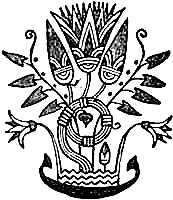
FINGER-RING LORE
LONDON: PRINTED BY
SPOTTISWOODE AND CO., NEW-STREET SQUARE
AND PARLIAMENT STREET
FINGER-RING LORE
HISTORICAL, LEGENDARY, ANECDOTAL
BY
WILLIAM JONES, F.S.A.

WITH NUMEROUS ILLUSTRATIONS
London
CHATTO AND WINDUS, PICCADILLY
1877
TO
MY WIFE:

Bon Cœur: Sans Peur.
PREFACE.
I had intended to confine my observations exclusively to the subject of‘ring superstitions,’ but in going through a wide field of oldenliterature I found so much of interest in connection with rings generally,that I have ventured to give the present work a more varied, and, I trust,a more attractive character.
The importance of this branch of archæology cannot be too highlyappreciated, embracing incidents, historic and social, from the earliesttimes, brought to our notice by invaluable specimens of glyptic art, manyof them of the purest taste, beauty, and excellency; elucidating obscurepoints in the creeds and general usages of the past, types for artisticimitation, besides supplying links to fix particular times and events.
In thus contributing to the extension of knowledge, the subject ofring-lore has a close affinity to that of numismatics, but it possessesthe supreme advantage of appealing to our sympathies and affections. SoHerrick sings of the wedding-ring:
[Pg viii]And as this round
Is nowhere found
To flaw, or else to sever,
So let our love
As endless prove,
And pure as gold for ever!
It must be admitted that in many cases of particular rings it is sometimesdifficult to arrive at concurrent conclusions respecting their date andauthenticity: much has to be left to conjecture, but the pursuit ofenquiry into the past is always pleasant and instructive, howeverunsuccessful in its results. One of our most eminent antiquarians writesto me thus: ‘We must not take for granted that everything in print iscorrect, for fresh information is from time to time obtained which showsto be incorrect that which was previously written.’
My acknowledgments are due to friends at home and abroad, whosecollections of rings have been opened for my inspection with true masoniccordiality.
I have also to thank the publishers of this work for the liberal manner inwhich they have illustrated the text. Many of the engravings are fromdrawings taken from the gem-room of the British, and from other museums,and from rare and costly works on the Fine Arts, not easily accessible tothe general reader. Descriptions of rings without pictorialrepresentations would (as in the case of coins) materially[Pg ix] les